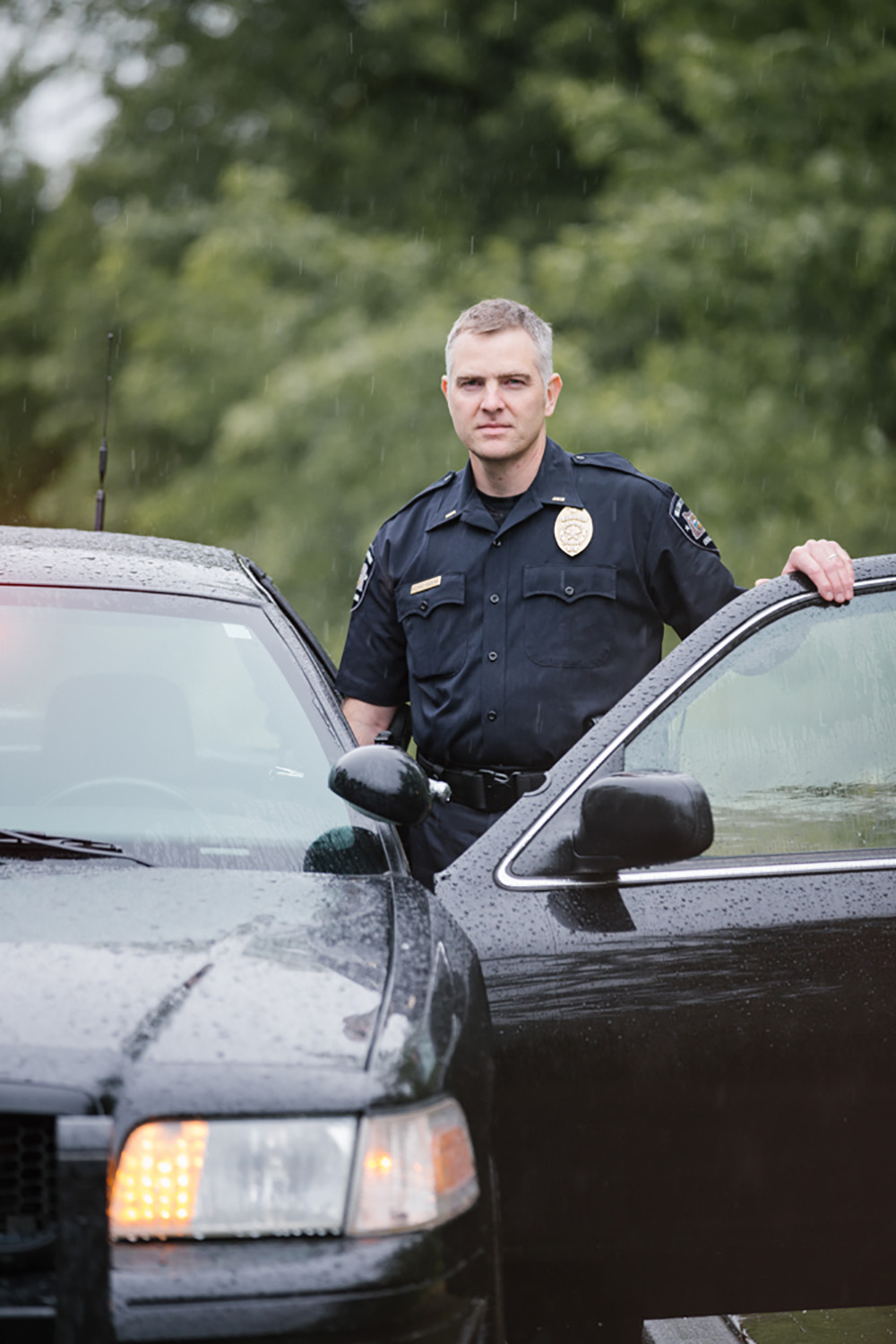Richard Goerling walks into a room of first responders, prison guards, and military members all wearing gym clothes instead of uniforms, sitting on blue yoga mats.
“So you’re here for some hippie-bullshit mindfulness training,” he says.
A few chuckles break out in the conference-room-turned-meditation center in an office park outside of Portland, Oregon. Dressed in faded jeans, the 50-year-old Goerling sits cross-legged on his mat and asks everyone to close their eyes and imagine their breath on the tip of their nose. With each breath, he says, focus your energy on the air’s movement. As the participants breathe in and out, only brief rustles of fidgeting punctuate the sound of Goerling’s measured voice.
A police officer himself, Goerling is sensitive to the skepticism that cops might bring to mindfulness, and he takes care not to use incense, gongs, or even the word yoga (he suggests that his trainees focus on “mindful movement”). In this eight-hour training, he introduces them to a variety of neuroscientific findings on the effects of mindful meditation—how it can lower cortisol, a hormone related to stress—while also teaching them meditation practices.

Goerling is one of a growing number of leaders in law enforcement who envisions meditation as part of the future of policing. So far several thousand officers have been trained in cities like Dallas, Boston, and Seattle, as well as in towns across Oregon, California, and Wisconsin. Proponents have championed the practice as a way to limit stress, treat the high rates of post-traumatic stress disorder among police, and even reduce excessive use of force.
“I absolutely believe that mindfulness training is the foundation for any successful police reform and transformation,” Goerling says. “It’s critical.”
Several recent studies have suggested that mindfulness can reduce stress and curb aggression, particularly in law enforcement officers. Many of these studies, though, rely on self-reporting and other wishy-washy measurement methods, such as implicit association tests. When it comes to some of the most violent behavior among police, including incidents associated with racial bias, there is very little evidence that meditation makes any difference.
“There is a risk that these kinds of training programs, no matter how well intentioned, will only provide the illusion of police reform rather than getting at the structural forces that drive disrespectful and aggressive over-policing,” says Alex S. Vitale, a professor of sociology at Brooklyn College and author of the book The End of Policing.
Mark Winston Griffith, a black activist and head of the Brooklyn Movement Center, a community organizing group in New York City, has been working on issues concerning race and the police for nearly three decades. He’s skeptical that meditation can reduce police violence.
“To hear the police pushing meditation, it just sounds cynical,” he says.
For at least the past five years, Marines and other members of the armed forces have been similarly trained. Beyond therapeutic uses, the details of this training suggest that military instructors believe mindfulness can also make the military more efficient at using force. Former United States Army Captain Elizabeth A. Stanley, who developed a mindfulness program for the Marines, has noted that existing Marine Corps trainings incorporate aspects of these practices into M-16 weapons drills, with trainees encouraged to “synchronize the breathing process to trigger the finger’s movement,” thereby improving their accuracy. While much of Goerling’s program focuses on violence reduction techniques, he too urges officers to emulate the idea of a “warrior-humanitarian,” someone whose “compassion drives them to use force for the greater good.”
With American culture at large infatuated with meditation, critics say that mindfulness for cops is a cosmetic response to a deeper problem.
“At the end of the day it means that, structurally, everything remains the same,” Griffith says.





